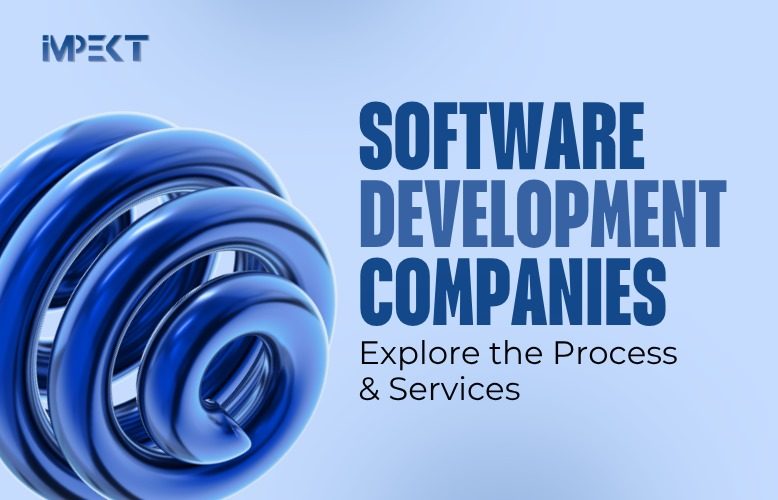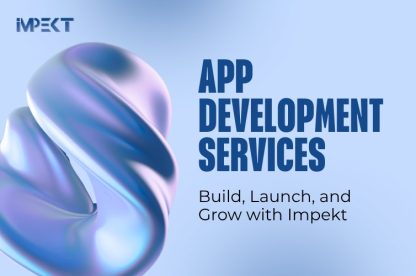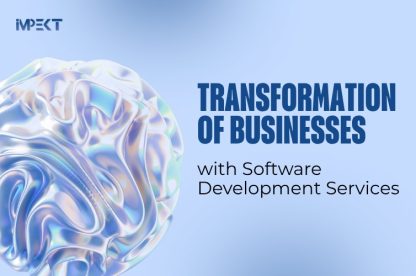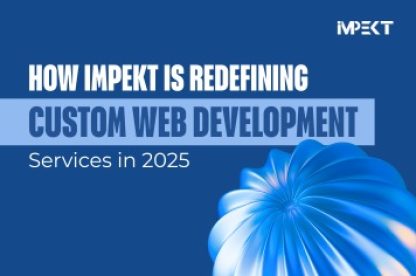Rank your content and accelerate your sales with custom software development services. Are you running an e-commerce store or some traditional business? This software development service helps you grow fast and stand out in the market. Today, we will discuss 5 different custom software development services that give solutions for Enterprise businesses.
Custom Software Development Services
Through custom software development services, software is developed from the core, tailored to every need of the system. Several businesses take these services to develop specific software for their system. Various software development agencies and developers offer their services and equip businesses with secure, intuitive, and reliable systems.
The goal of the business and requirement of a system would be any, and that’s the reason there are multiple forms of custom software, such as content management systems, web development software, e-commerce online stores, etc.
Content Management Systems (CMS)
The CMS software is used to manage content from its creation to its management to publish it. The ultimate goal of content management is to keep content optimized in search engines.
Features
Flawless content management requires keeping the tasks and side tasks organized to keep the process smooth. Aside from content management, CMS allows operators to perform those tasks on the software. We describe this adaptability as a feature of the software. These include:
- Content authoring: In CMS, operators create and add content in the system, such as blogs, newsletters, and product descriptions. The content can be written and saved as a draft that includes text, images, and videos. Example covers blogs on WordPress and product details on Shopify.
- Editing: Publishers, writers, and marketers edit, modify, and optimize content after developing it. Different types of content are edited in different ways. Text correction and optimization are mainly for blogs, whereas visual content is resized, replaced, and formatted. This is like an On-page editing as coding is not involved.
- Version control: When content is edited after being written or developed, its different versions are made. This feature enables you to keep content organized and to track all versions of each content separately. Along with the content, it includes the record of the editing team and dates.
- Workflow management: With this feature, a record of every task is kept. Consider that a writer creates content, then the manager reviews it and gives approval, and then the publisher posts it. The record has information regarding workers, content, and events with time and date. It keeps things organized, transparent, and makes workers conscious of their work.
- Content delivery: Here, the content is ready to go live. The publisher posts it on a website, and marketers distribute it.
WordPress, Sitecore, and Prismic are all content management systems.
Customer Relationship Management (CRM):
CRM is used to manage and analyze customer behavior and data throughout the customer lifecycle. It helps improve customer relationships and increase sales.
Features
To perform the process smoothly and in an organized manner, CRM features:
- Storing customer data: CRM serves as a single storage place for all customer data. In this system, details of each customer are added to keep them preserved, such as contact info, liked and cart items, and checkout details.
- Managing leads and opportunities: It is about storing and managing data of visitors when they survey the store or make a purchase. With this, people are tracked and targeted to increase the chances of sale.
- Tracking sales activities: All activities of the sales process are monitored by the staff. Such as emails, follow-ups, and calls. It actually tracks the progress, and gives an idea of which thing works and which doesn’t.
- Facilitating communication with customers: To keep in touch with customers, CRM has different tools, such as chat, emails, and messages. These are used for information, notifications, follow-ups, and surveys.
Salesforce, Nimble, and Pipedrive CRM are all examples of custom relationship management software.
Enterprise Resource Planning (ERP):
The enterprise resource planning software plays its role in integrating and managing key business processes.
Features
Enterprise Resource Planning offers the following characteristics:
- Streamline workflows: To keep the work smooth and fast, different systems are interconnected, instead of working individually. This way, there is less paperwork and fewer additional tasks.
- Improve efficiency: ERP interconnects multiple systems, and they work in place of humans, without communication, mistakes, and with more speed.
- Provide real-time insights for decision-making: Decisions need some previous information, too. ERP provides accurate and up-to-date data, helping make fine decisions.
Examples of ERP software are Oracle ERP Cloud, Epicor, and Workday.
Operations Management Software:
This software is developed to allow and give systems to oversee and optimize specific operations. Due to this, each custom software that is developed is completely different from the other. Examples are project management, workforce management, and inventory tracking.
Features
The features of this software are:
- Managing tasks: Task management includes organizing, handling, and updating all the tasks that have to be done. This software allows you to add, assign, pin, and monitor tasks to keep things clear for staff.
- Scheduling resources: In this, resources like people, tools, machines, and software are booked for their specific tasks in an interconnected and organized way.
- Tracking progress: By this, processes and activities are kept under monitoring and checked how and at what rate every task is proceeding further.
- Analyzing performance: Analysis of staff, tasks, and their completion is done with the help of data, reports, and key performance indicators (KPIs) to further refine policies.
Examples of Operations Management Software include Odoi, Trello, Cin7, etc.
Business Intelligence (BI):
This software system allows businesses to analyze data, identify trends, and make informed decisions for strategic planning.
Features
Important key points of BI are:
- Data integration: In this, data from different sources, like Shopify and Excel, is integrated into one page, such as a spreadsheet or base. It helps fast analysis, perception-making process, and decision-making.
- Analysis: The collected data is analyzed by marketers, managers, and staff to understand how and what events are happening. It is done through SQL queries and pivot tables.
- Reporting: On it, reports are also made and organized through tables and charts. It covers the previous information regarding tasks and results.
- Dashboarding: Dashboard consists of visuals, displays, and metrics. It presents real-time performance and helps users monitor all details quickly.
QlikView, Looker, and Domo are some examples of business intelligence.
Win over your competitors and set your own trends in the market while managing your business with a little extra attention. Custom software development services allow you to grow your business digitally.
FAQ’s
Q1. What is CRM?
The CMS software is used to manage content from its creation to its management to publish it. The ultimate goal of content management is to keep content optimized in search engines.
Q2. Features of CRM?
The features of customer relationship management are:
- Storing customer data
- Managing leads and opportunities
- Tracking sales activities
- Facilitating communication with customers
Q3. Examples of ERP?
Examples of ERP software are Oracle ERP Cloud, Epicor, and Workday.
Q4. What is Operation management software?
This software is developed to allow and give systems to oversee and optimize specific operations. Due to this, each custom software that is developed is completely different from the other. Examples are project management, workforce management, and inventory tracking.
Q5. Features of BI?
These are:
- Scheduling resources
- Managing tasks
- Tracking progress
- Analyzing performance







